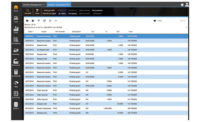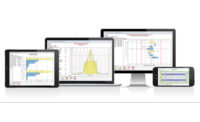A warehouse management system (WMS) centers on software that supports day-to-day operations. WMS programs enable centralized management of a wide range of tasks, including tracking inventory levels and stock locations, order fulfillment, and shipping and receiving. The latest WMS software innovations are making the connected warehouse a reality and moving distribution into the digital age.
This is good news for snack producers and bakery companies, as lead times between order cutoff and warehouse picking and shipping continue to grow shorter due to market demand. Customers are expecting a shorter turnaround on their orders, which is cutting the lead time that manufacturers have for picking and shipping.
Fresh solutions
This is particularly true for fresh items so prevalent in baking. “The biggest impact we’ve seen with fresh manufacturers is the need to forecast accurately. Baking often starts before the cutoff time, so without a forecast you could be missing out on sales due to under-producing or wasting product due to overproducing,” says Wayne Ortner, account executive, FlexiBake ERP, Vancouver, British Columbia.
For fresh manufacturers who build and ship from inventory, Ortner sees more reliance on minimum stock levels. With properly planned stock levels, producers can keep up with short leads times and still maintain an efficient inventory.
Scott Deakins, COO, Deacom Inc., Chesterbrook, PA, has seen customer demand for additional shelf life increasing. “The significance of expiration dates expands beyond FDA compliance and is becoming a more-prominent driver in consumer purchasing decisions. Large grocery retailers are asking manufacturers to deliver products with a certain shelf life percentage,” he notes.
For instance, Deakins notes, if a product has a 14-day shelf life, grocers may require that the product be in their hands with 50 percent of its shelf life remaining. Therefore, producers sometimes have to shift away from “first expired, first out” (FEFO) and “first in, first out” (FIFO) picking practices, adding to the complexity of warehouse management solutions.
Among the latest innovations in WMS software, experts see more detailed lot tracking and traceability, with software evolving to keep up with quick turnaround requirements. In addition, they see more palletization by lot numbers, intelligent placement of finished goods and pick lists generated from a live inventory.
The latest WMS software is designed to improve order fulfillment, shipping and receiving—from ingredients and packaging coming in, to finished products going out. In fact, tracking ingredient lot numbers through the production process is becoming the norm. This is especially important because, due to the Food Safety Modernization Act, producers need to be able to conduct mock recalls. Paper records have grown obsolete, necessitating the transition over to paperless software management.
“FlexiBake assigns lot numbers to ingredients and packaging received. Once a batch has been produced, the lots of the raw materials used are automatically consumed from inventory and a new batch number for the recipe or work in progress (WIP) is produced. Finishing and packing the product consumes the WIP and packaging out of inventory, creating products available for shipment. Shipping consumes products out of inventory, completing the process with detailed traceability,” Ortner explains.
WMS software has the ability to track and trace products that are coming into the warehouse in multiple fashions, according to Mark Dickinson, head of IT solutions-sales, North America, SSI Schaefer Systems International Inc., Charlotte, NC. Instead of a FIFO process, bakery/snack producers typically work more toward a best-by date, he says.
“In practice, you could receive SKU123 with a best-by date of 2/1 on Monday and receive more of SKU123 on Tuesday with a best-by date of 1/20,” says Dickinson. “In a typical warehouse, the WMS software would allocate orders against the first batch of inventory that was received (best-by date 2/1). However, modern WMS systems are smart enough to look at the best-by dates and select the product that is most critical.”
Wireless applications
Wireless applications are increasing inside today’s warehouse operations. Tablets are used for inventory counts, palletization and picking. The technology is becoming more user-friendly, and many manufacturers are opting for a cloud-based software solution over locally installed versions.
“You have tablets, smartphones, radio frequency (RF) devices and monitors for the shipping/receiving office that display key operational data,” says Joe E. Couto, chief operating officer, HighJump, Minneapolis. “The number of mobile devices has increased dramatically over the past five years. Our company has introduced self-service tablets that allow drivers to get assigned dock schedules for loading and unloading.”
Couto also foresees the increased use of smart sensors, temperature devices that can follow baked goods from the warehouse to the store. He also anticipates IoT (internet of things) technology embedded in cases that will detect damage, temperature and location of goods.
While scanner hardware has not evolved dramatically over the past 10 years, the applications that run on the software have evolved to a great degree, according to Deakins. “GS1-128 barcodes are perhaps the most-prominent evolution in recent years for those in the supply chain. They capture multiple pieces of information about a lot within a single barcode, including the part number, lot number, quantity, catch weight and expiration date,” he says.
Picking solutions
Warehouse picking solutions have evolved, as well. The days of printing a pick list on a sheet of paper are quickly coming to an end. And more manufacturers are moving their enterprise resource planning (ERP) and WMS software to cloud-based systems. Using a tablet, pickers are able to confirm lot codes, and inventory is updated immediately. Meanwhile, mobile inventory counts keep pickers updated with the latest stock values and lot numbers.
Dickinson says that picking has evolved into a scalable, high-efficiency fulfillment engine. “The picking and storage concepts are largely de-coupled, and we are now able to match a goods-to-person (GTP) solution to different storage systems—be it a shuttle, carousel or mini-load device. Automated guided vehicles (AGVs) allow for flexibility in the movement of congruent load units.” New technologies are also able to match a robotic picking arm to an AGV to fulfill orders, he adds.
Ralf Ulmer, president, toolbox Software North America Inc., Scottsdale, AZ, says his company’s Dispotool system was created for bakeries and can be operated with multiple devices such as pick-by-light, pick-by-voice and pick-by-vision. “Knowing what is available from production recording, the system has built-in rules for shortages and possible substitutions.”
Ulmer receives many requests for production recording and analysis of warehouse operations. “Our Dispotool system knows what was produced and gives this information to management. For bakeries that produce frozen goods, the system supplies an online inventory. Based on the inventory and forecast, internal production orders can be generated to replenish the stock.”
Dispotool also tracks the performance numbers per employee, such as units or trays per hour. The company sets a goal, and better performance is credited to the pickers. Dispotool considers breaks and other jobs, such as unloading a trailer, for the average calculation, as well as units-per-pick and number of routes/customers picked.
UNEX Manufacturing, Lakewood, NJ, offers a solution for slotting stock keeping units (SKUs) that ensures the products are stored in the right location to maximize order picking and space utilization. Its SKUBE software sorts through factors such as carton size, height and weight, as well as what products are in high demand, to determine what should go where in what type of carton flow setup. “The easier and faster the product moves in the order-picking process, the more efficient the operation. The software program helps one determine how to do that,” says Brian C. Neuwirth, vice president of sales and marketing.
Looking ahead
Tompkins International, Raleigh, NC, has developed a new vision of warehouse operations for the future, The Connected Warehouse, which integrates three key elements, people, processes and automation, to reinvent the warehouse environment for the digital age.
The Connected Warehouse is powered by SensorThink, a digital platform built specifically for the warehouse. Every piece of digital information generated can be collected, processed, archived and analyzed, allowing one to manage material handling automation, security, HVAC, lighting, lift trucks and maintenance systems.
“SensorThink’s cloud machine learning and cross-platform analytics engine allows one to view and analyze this information within the building or across the distribution network,” says Eric Peters, CEO, SensorThink. “It ties together all of the elements of production, performance and execution into one platform.”












